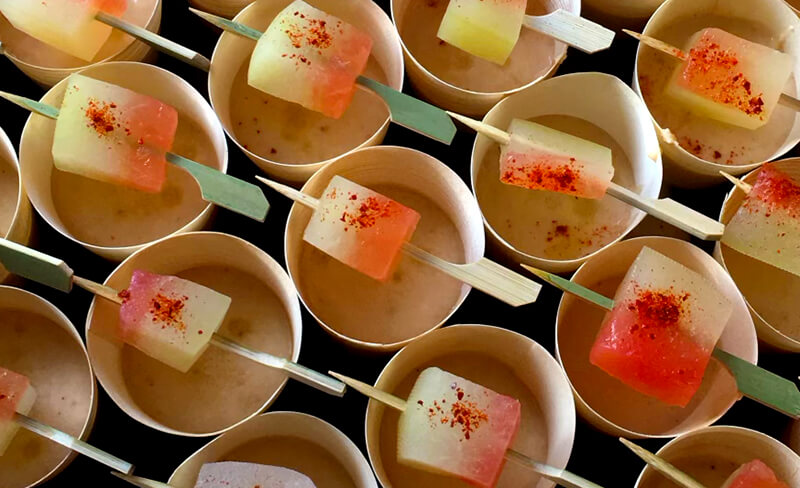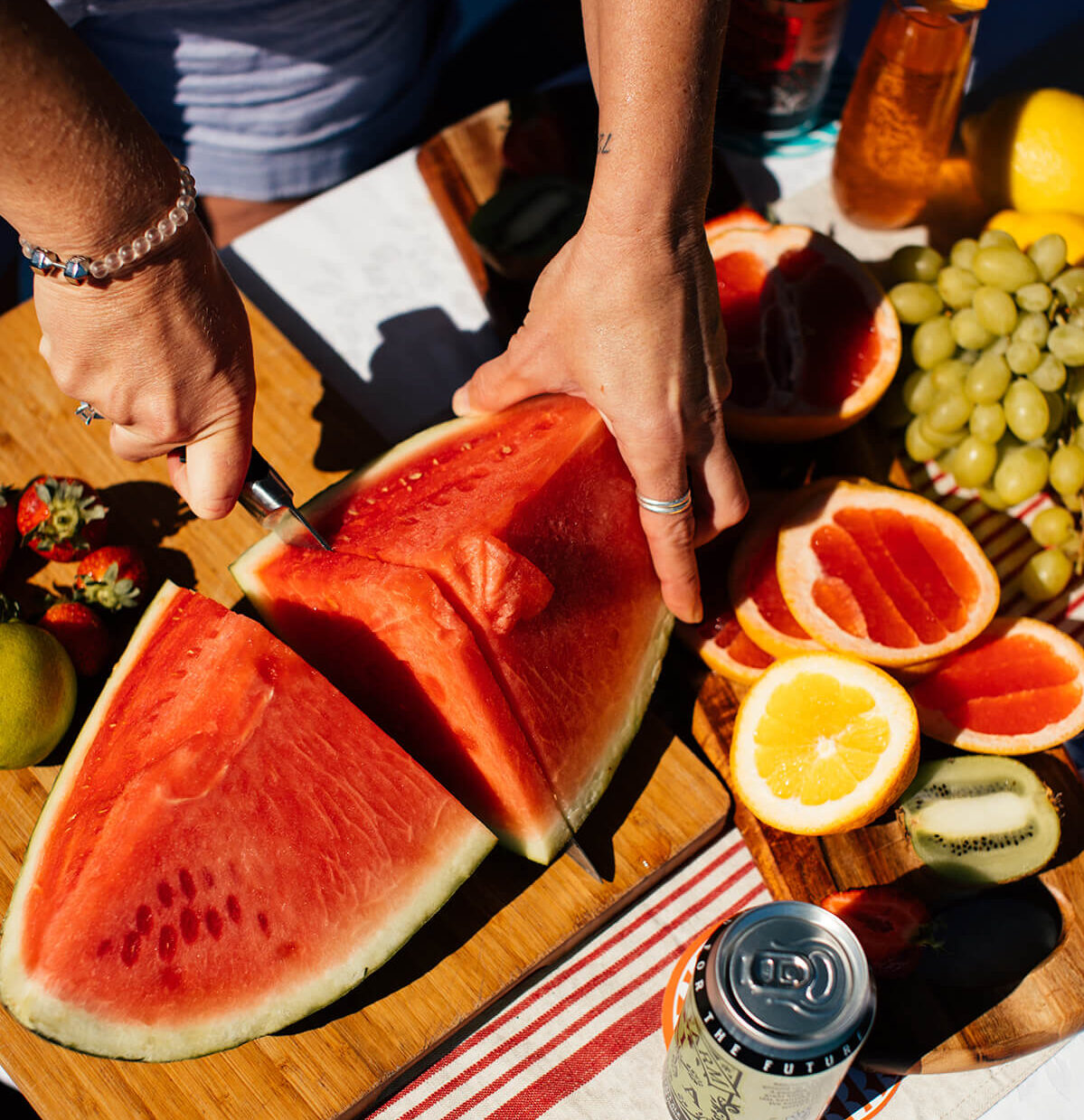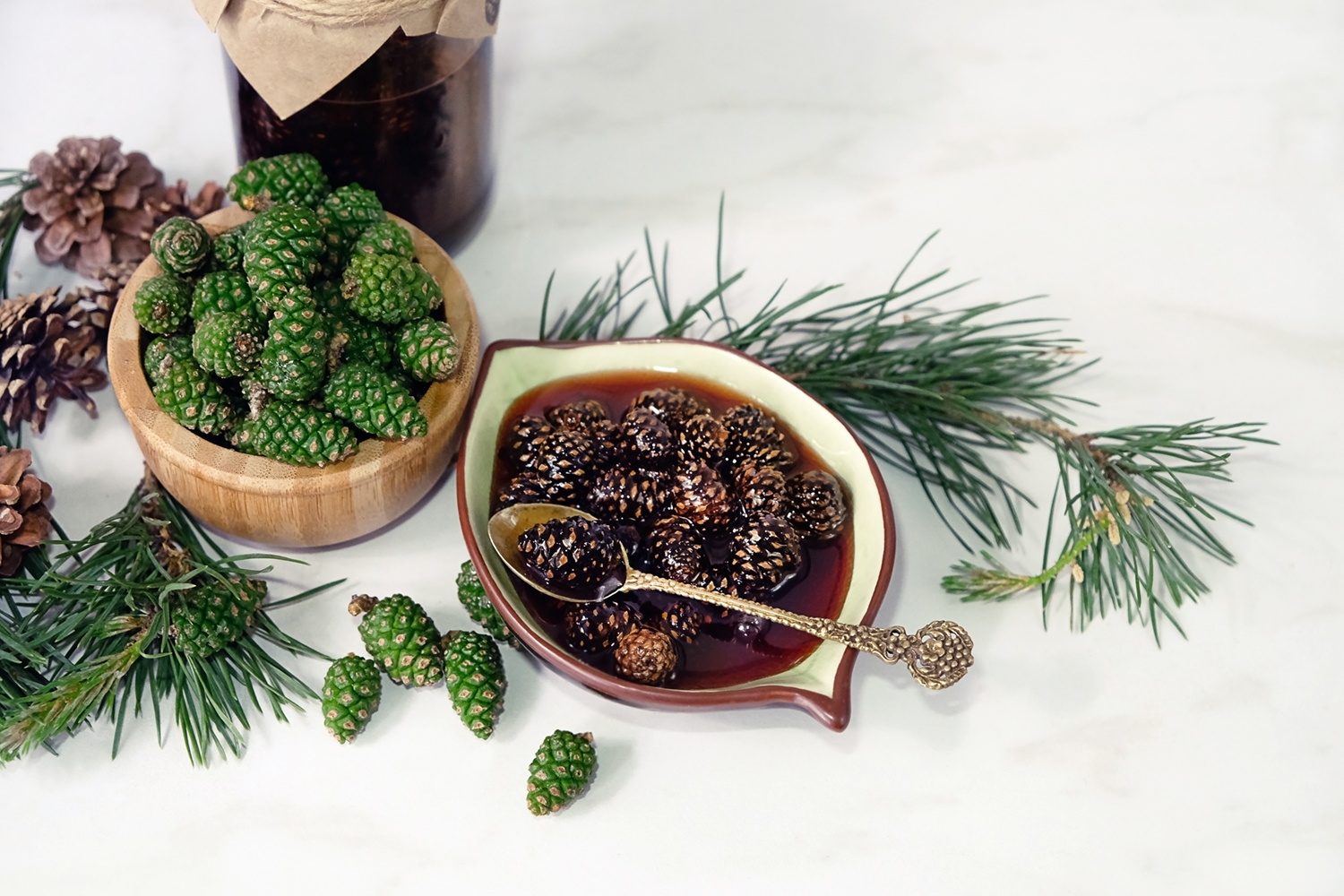In my youth, I fondly remember planting watermelon seeds and going out into the garden ecstatic at any signs of its growth. I love watermelon. From its vibrant green rind to its juicy, crimson flesh, the watermelon is a summertime symbol of refreshment and delight. There is no other summer fruit that makes me happier. This delectable fruit has a rich history and many culinary uses that have evolved over time. Watermelon is a gem in the culinary world, from its humble ancient origins to its prominent place in today’s diverse gastronomic landscape.
The watermelon’s story begins in Africa, where its ancestor, Citrullus lanatus, still resides. Traces of watermelon seeds have been found in ancient Egyptian tombs, dating back over 4,000 years. This fruit was highly esteemed in Egyptian society, commonly depicted in art and even buried alongside the dead pharaohs to nourish them in the afterlife.
As global trade expanded, watermelons spread across the Mediterranean, reaching Europe and Asia. Ancient Roman writings mention this fruit, praising its sweetness and thirst-quenching properties. It became a standard menu item in these civilizations and was often enjoyed on festive occasions.
Watermelon’s culinary uses are as diverse as the cultures that embraced it. In the Middle East, it is often paired with salty feta cheese and fresh mint, creating a harmonious balance of flavors. This sweet and savory combination can be found in popular dishes like Turkish watermelon salad and Lebanese watermelon and feta mezze. In Southeast Asia, watermelon is crucial in refreshing beverages and desserts. Thai watermelon juice, smoothies and shaved ice treats are also prevalent throughout the region. In Mexico, watermelon is enjoyed with Chamoy and Tajin Spice, making it a sour, spicy, salty treat.
Today, the culinary landscape has witnessed a resurgence of interest in watermelon, with innovative chefs and home cooks experimenting with its versatile potential. It has a natural sweetness and high-water content, making it an ideal ingredient for savory and sweet dishes. Some clever chefs can even vacuum seal and oven roast watermelon with flavorful ingredients and make a vegan ‘tuna’ for watermelon tuna poke. In salads, watermelon adds a burst of freshness and vibrant color. Combined with ingredients like arugula, goat cheese and balsamic reduction, it elevates the simplest of salads into a gourmet delight. Chefs also embrace the concept of “nose-to-tail” or “leaf-to-root” cooking by utilizing all parts of the watermelon, including the rind. Pickled watermelon rinds, originally common in Pennsylvania Dutch and Southern cuisine, have become trendy, offering a tangy and slightly sweet accompaniment.
Watermelon has also made its way into the world of mixology, adding a unique twist to cocktails. Its juice can be muddled with herbs like basil or mint to create refreshing summer libations. Additionally, watermelon is used to flavor spirits, resulting in flavorful concoctions that are sure to please.
The use of watermelon in modern culinary creations extends beyond the fruit itself. Watermelon seeds are sprouted, toasted and incorporated into granola, trail mixes and baked goods. These seeds are packed with nutrients, including healthy fats, magnesium and iron, making them a valuable addition to a balanced diet.
Southern Delaware has the perfect soil conditions to grow watermelon, due to its sandy, well-draining soil. If you are planting watermelon in Southern Delaware, now is the time to do it, because harvesting the melon can occur from late July to September. My favorite places to purchase watermelons are from the Rehoboth and Lewes farmers markets.

Watermelon Rind White Gazpacho
Makes 4 Servings
- 2 English cucumbers, peeled and chopped
- 4 cups watermelon rind, peeled and chopped (white part only)
- 1 cup blanched almonds
- 3 cloves garlic
- 2 tablespoons extra-virgin olive oil
- 2 tablespoons sherry vinegar
- 1 cup cold water
- Salt, to taste
- More olive oil for garnish (optional)
Place the chopped cucumbers, watermelon rind, blanched almonds, garlic cloves, extra-virgin olive oil, sherry vinegar and cold water in a blender.
Blend the mixture until smooth and creamy, ensuring all ingredients are well incorporated.
Season the gazpacho with salt to taste. Blend again to incorporate the seasoning.
Transfer the gazpacho to a large bowl or container and refrigerate for at least one hour to allow the flavors to meld and the soup to chill.
Before serving, give the gazpacho a good stir. Taste and adjust the seasoning if necessary. Ladle the chilled white gazpacho into individual bowls or glasses. Garnish with a drizzle of olive oil.
Serve the white gazpacho as a refreshing starter or light lunch option. It pairs well with crusty bread or a watermelon side salad.















